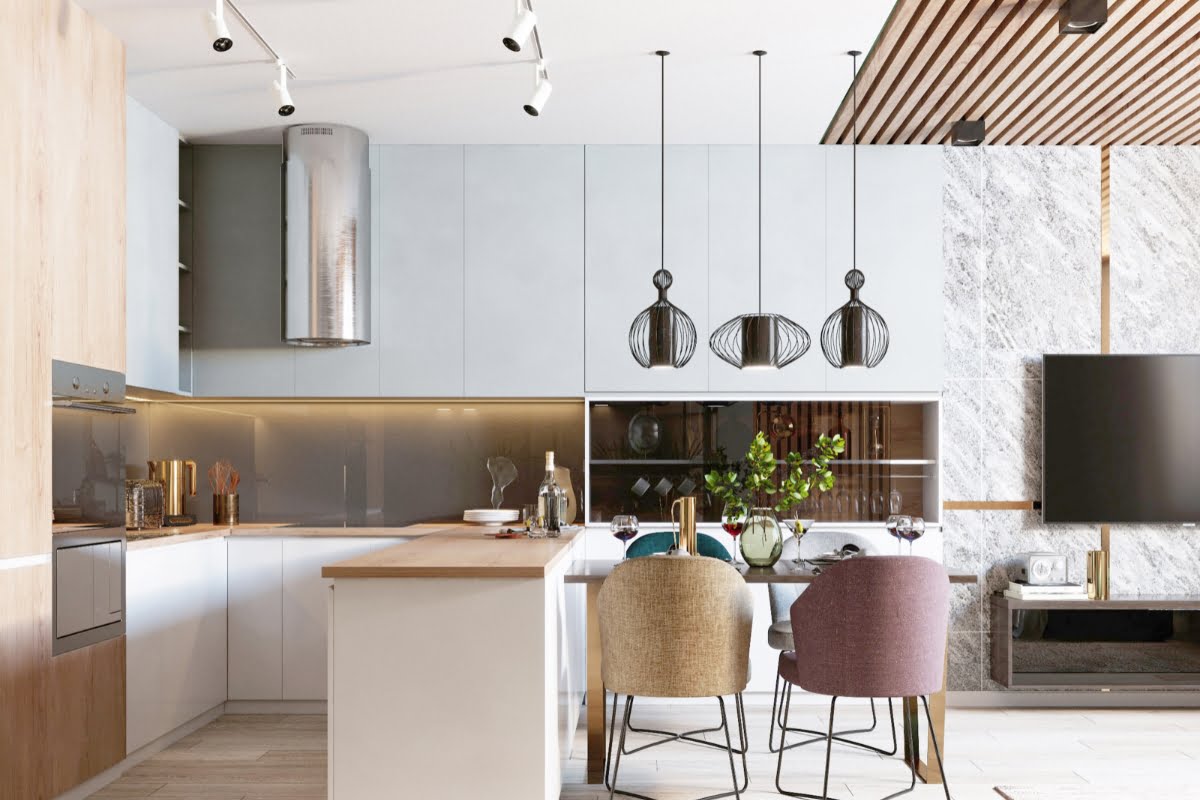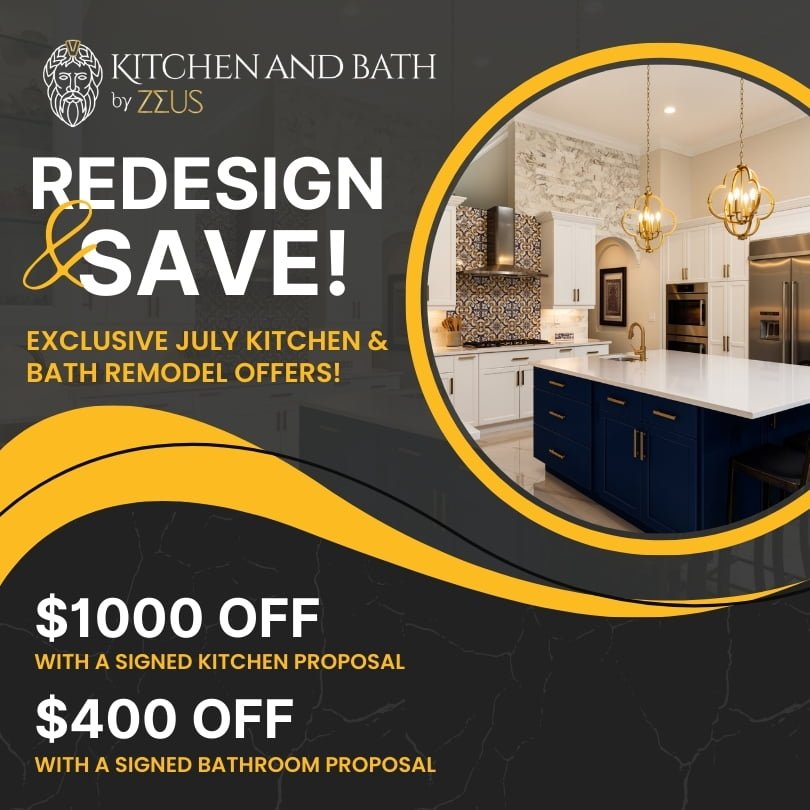As the heart of the home, kitchens are constantly evolving to meet the changing needs and preferences of homeowners. From innovative technology to timeless design elements, kitchen design trends are continually shaping the culinary spaces of tomorrow.
In this guide, we'll explore the latest trends that are revolutionizing kitchen design, offering insights and inspiration for creating functional and stylish culinary spaces.
Whether you're planning a kitchen renovation or simply seeking ideas to refresh your space, get ready to discover the trends that are reshaping tomorrow's kitchens and transform your culinary space into a hub of innovation and creativity.
Stay Ahead of the Curve: Explore the Latest Kitchen Design Trends
Smart Appliances Revolutionizing Kitchen Efficiency
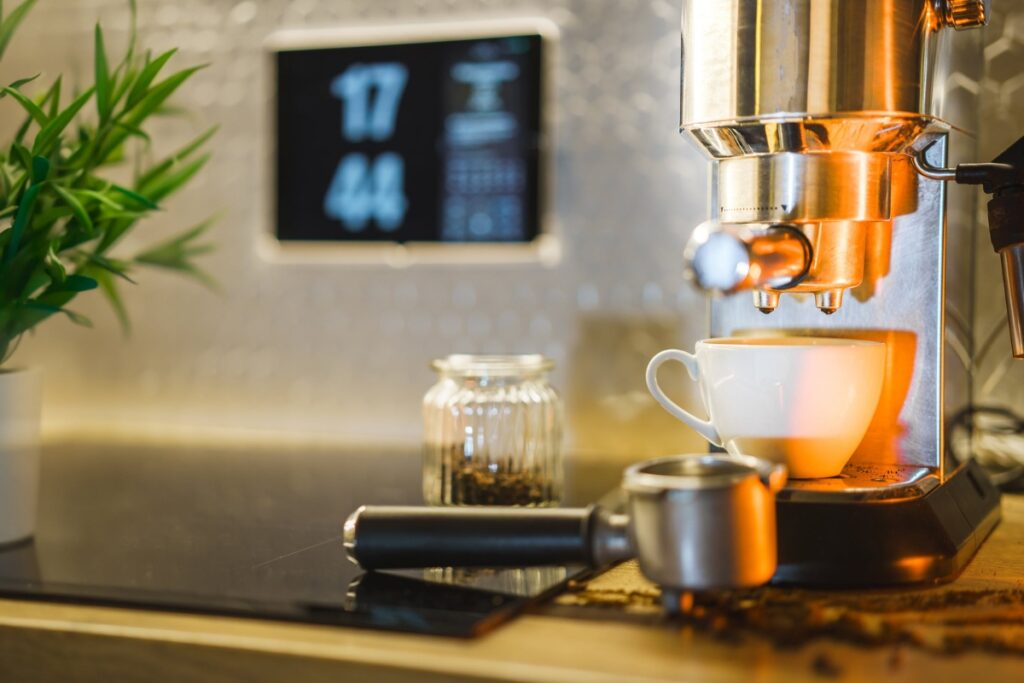
The kitchen is no longer just a place for cooking; it has become a space where technology seamlessly integrates with functionality to make our lives easier. Smart appliances are revolutionizing kitchen efficiency, transforming the way we cook and interact with our culinary spaces.
Imagine a refrigerator that can create shopping lists based on its contents, or an oven that can be controlled remotely through your smartphone. These smart appliances not only save time and energy but also enhance the overall cooking experience. With features like voice control and recipe suggestions, they take the guesswork out of meal preparation and ensure consistently delicious results.
Furthermore, smart appliances are designed to be energy-efficient, reducing our carbon footprint and promoting sustainability in the kitchen. They can monitor energy usage and adjust settings accordingly, helping us save both money and resources. From refrigerators with sensors that optimize temperature settings to dishwashers that use minimal water, these appliances are paving the way for a greener future.
Incorporating smart appliances into kitchen design not only enhances efficiency but also adds a touch of modernity and sophistication. Sleek designs, stainless steel finishes, and intuitive interfaces make these appliances visually appealing while seamlessly blending with any kitchen aesthetic.
Sustainability in Kitchen Design: Eco-Friendly Materials and Practices
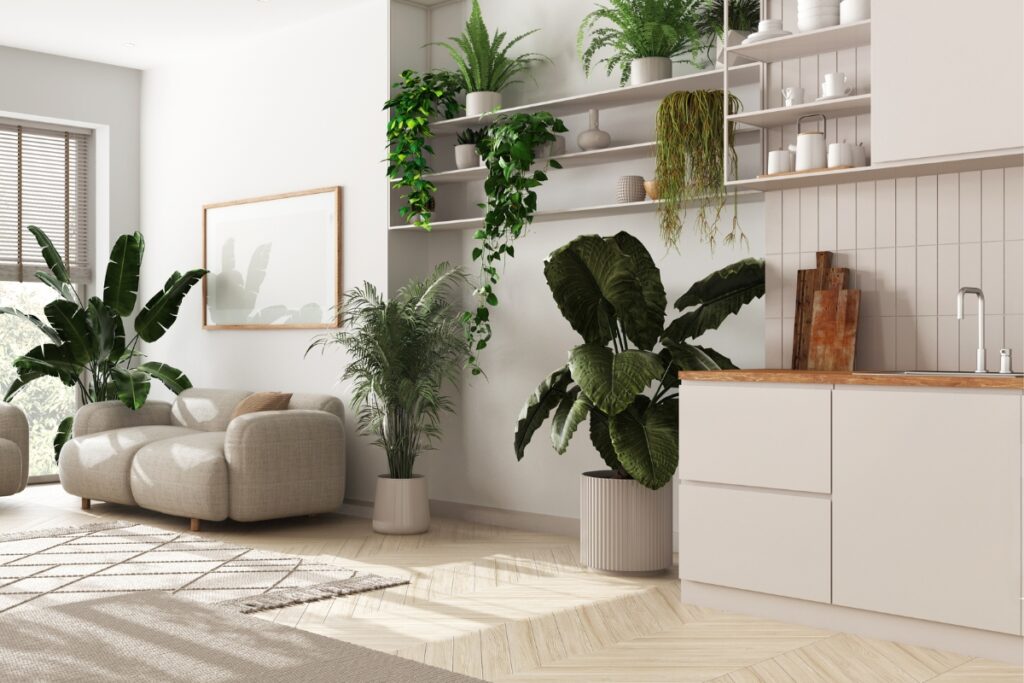
As environmental consciousness grows, so does the demand for sustainable kitchen design. Eco-friendly materials and practices are becoming increasingly popular choices for homeowners who want to create a greener living space.
One of the key trends in sustainable kitchen design is the use of recycled or reclaimed materials. Countertops made from recycled glass or wood flooring sourced from old barns not only add character to the space but also reduce waste. Additionally, using low VOC (volatile organic compound) paints and finishes ensures better indoor air quality while minimizing the environmental impact.
Another aspect of sustainable kitchen design is energy efficiency. Energy-efficient lighting, such as LED bulbs, can significantly reduce electricity consumption. Installing water-saving faucets and appliances helps conserve water, while composting systems enable homeowners to reduce food waste and create nutrient-rich soil for their gardens.
By incorporating sustainable materials and practices into kitchen design, homeowners can create spaces that are not only visually appealing but also contribute to a healthier planet. Sustainability is no longer just a trend; it's a responsibility we all share in shaping the future of our culinary spaces.
The Rise of Open-Concept Layouts in Modern Kitchens
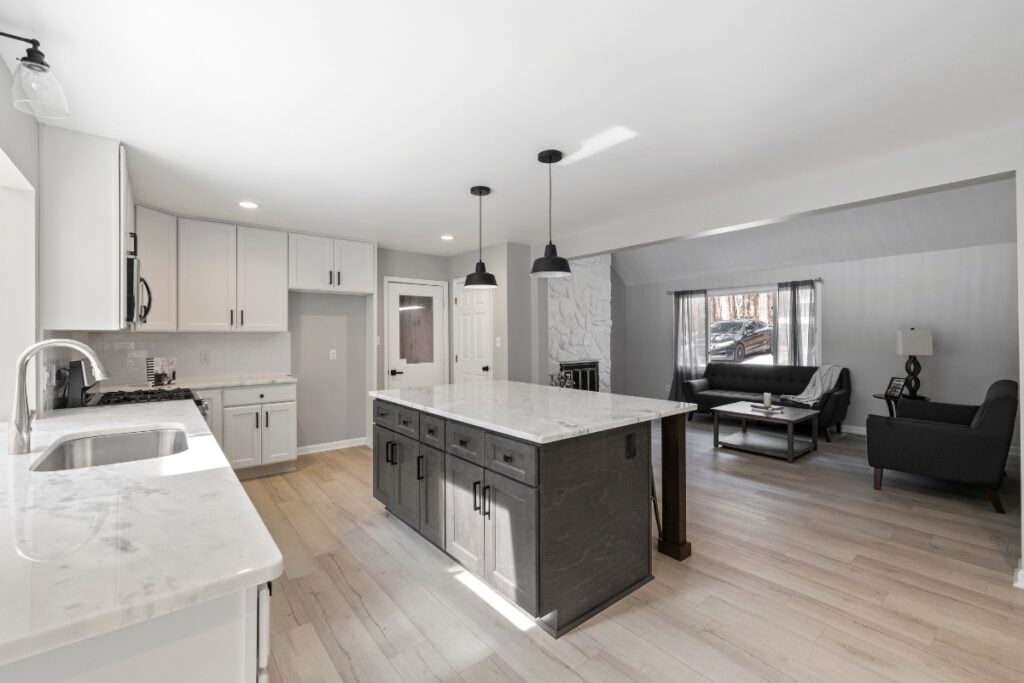
The era of secluded kitchens isolated from the rest of the house is a thing of the past. Modern kitchen design is embracing open-concept layouts more and more, merging the boundaries between cooking and socializing areas.
An open-concept kitchen eliminates barriers, creating a seamless flow between the kitchen, dining area, and living room. This layout promotes social interaction and allows hosts to engage with guests while preparing meals. It also maximizes natural light and creates a sense of spaciousness, making even small kitchens feel larger.
With an open-concept layout, the kitchen becomes a central hub where family members can gather after a long day or friends can mingle during parties. It fosters connection and creates a warm and inviting atmosphere that is perfect for both everyday living and special occasions.
In terms of design, open-concept kitchens often feature large islands or breakfast bars that serve as focal points for both cooking and socializing. These multifunctional spaces provide additional seating areas for casual dining or serving as workstations for remote work or homework.
Seamless Integration of Technology for Effortless Cooking Experience
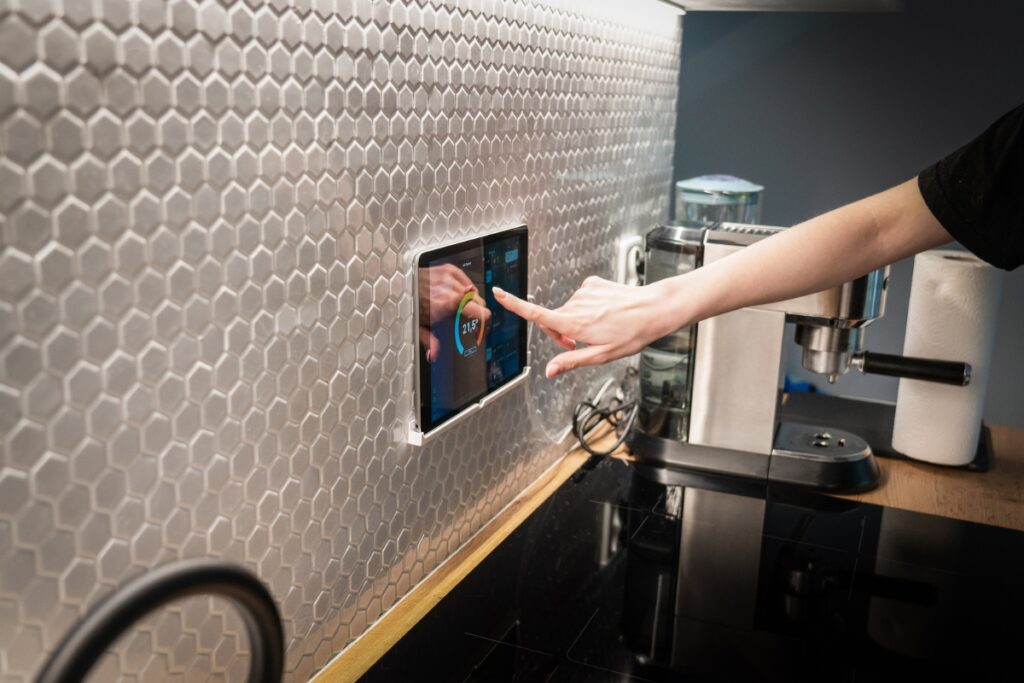
In today's fast-paced world, time is of the essence, and technology plays a crucial role in making our lives more convenient. The seamless integration of technology into kitchen design is transforming the way we cook and creating effortless cooking experiences.
From touchless faucets that turn on with a wave of your hand to voice-activated assistants that can read out recipes, technology is revolutionizing every aspect of the kitchen. Smart refrigerators with built-in cameras allow you to see what's inside without opening the door, while smart ovens can be preheated remotely using your smartphone.
Integration with smart home systems enables homeowners to control appliances, lighting, and temperature settings with a single touch or voice command. This level of automation not only simplifies daily tasks but also enhances safety and energy efficiency.
Moreover, technology has made its way into kitchen appliances themselves. Induction cooktops heat up faster and are more energy-efficient than traditional gas or electric stoves. Smart dishwashers can detect the level of dirtiness in dishes and adjust water usage accordingly, saving both water and energy.
The seamless integration of technology into kitchen design ensures that cooking becomes a hassle-free experience, allowing homeowners to focus on creating delicious meals for themselves and their loved ones.
Innovative Storage Solutions Maximizing Space and Functionality
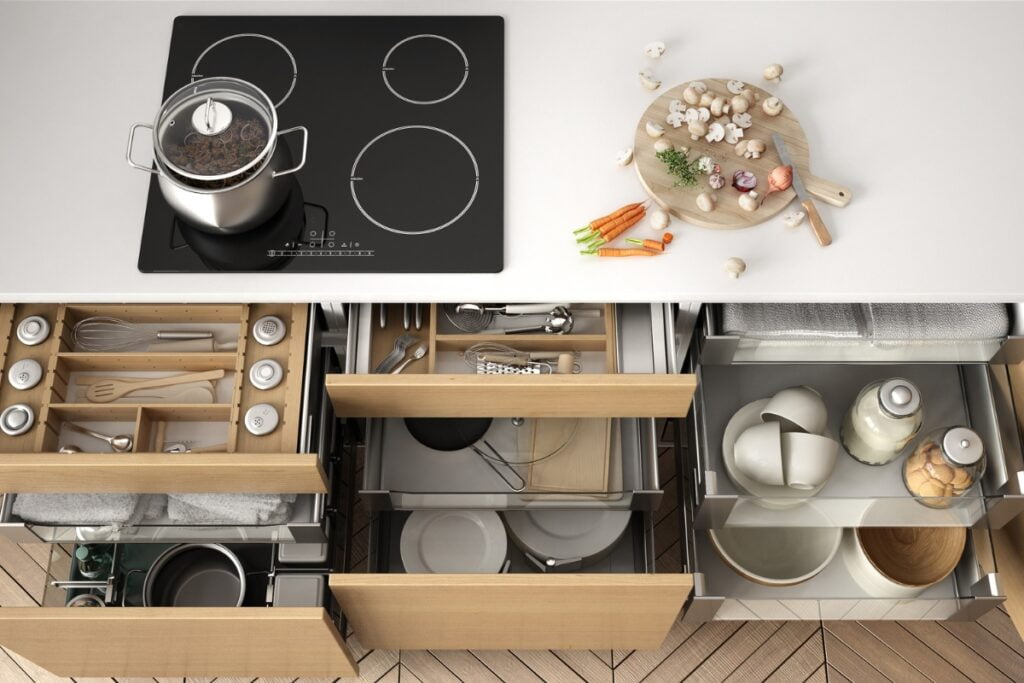
In modern kitchen design, innovative storage solutions are key to maximizing space and functionality. From pull-out drawers to hidden cabinets, these storage solutions ensure that every inch of the kitchen is utilized efficiently.
One popular trend is the use of vertical storage options such as tall cabinets or open shelving. These provide ample space for storing dishes, glassware, or even decorative items while keeping them easily accessible. Pull-out pantry shelves make organizing food items a breeze, while corner cabinets with rotating shelves optimize hard-to-reach spaces.
Another innovative storage solution is the incorporation of built-in organizers and dividers. These can be customized to fit specific needs, whether it's a dedicated spice rack or a drawer divider for cutlery. Pull-out trash and recycling bins are also gaining popularity, keeping unsightly waste out of sight while maintaining a clean and organized kitchen.
Maximizing functionality goes hand in hand with maximizing space. Kitchen islands with built-in storage provide additional workspace as well as extra room for storing pots, pans, or small appliances. Wall-mounted racks or hooks offer a practical solution for hanging utensils or cookware, freeing up valuable counter space.
By incorporating innovative storage solutions into kitchen design, homeowners can create spaces that are not only aesthetically pleasing but also highly functional and organized.
Bold Colors and Textures: Making a Statement in Kitchen Design
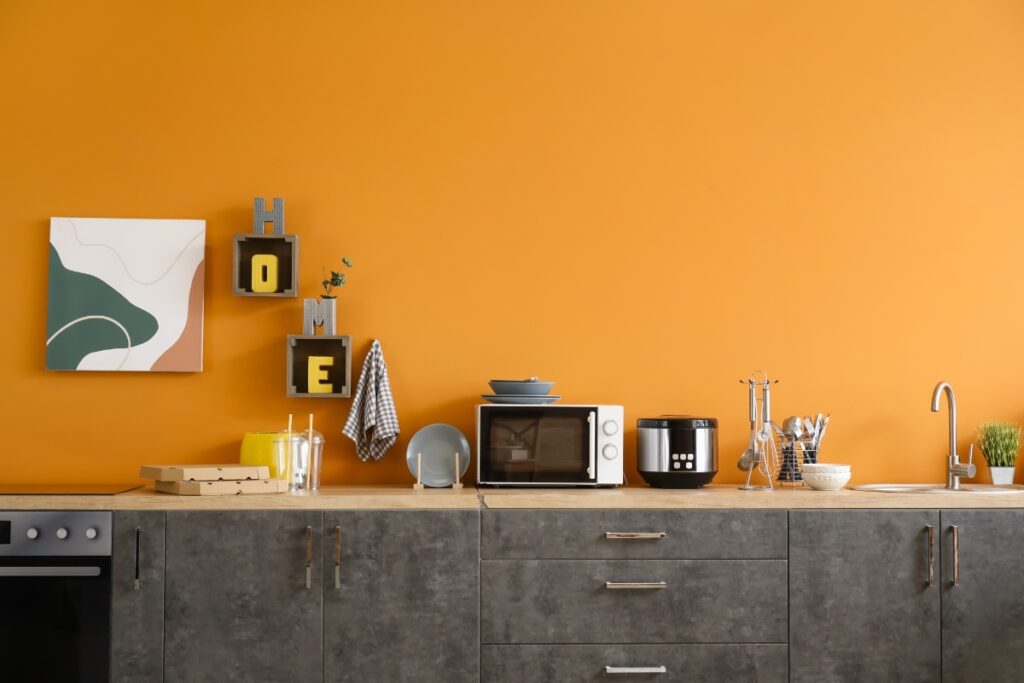
Gone are the days of all-white kitchens; bold colors and textures are making a statement in modern kitchen design. From vibrant cabinets to textured backsplashes, these design elements add personality and visual interest to culinary spaces.
One popular trend is the use of bold-colored cabinets or kitchen islands. Deep blues, rich greens, or even daring reds can instantly transform a kitchen from ordinary to extraordinary. These bold colors create focal points within the space and serve as an expression of personal style.
Textured backsplashes are another way to add visual interest to the kitchen. From subway tiles with raised patterns to mosaic tiles with intricate designs, textures bring depth and dimension to walls while protecting them from splatters and stains.
In addition to cabinets and backsplashes, bold colors can also be incorporated through appliances or countertops. Vibrant-colored appliances like refrigerators or ranges become eye-catching focal points while adding a playful touch to the overall design. Countertops made from materials like quartz or granite offer a wide range of colors and patterns, allowing homeowners to create unique and personalized kitchen spaces.
By embracing bold colors and textures, homeowners can create kitchens that are not only functional but also visually stunning, reflecting their individuality and style.
Biophilic Design: Bringing Nature Indoors for Wellness and Harmony
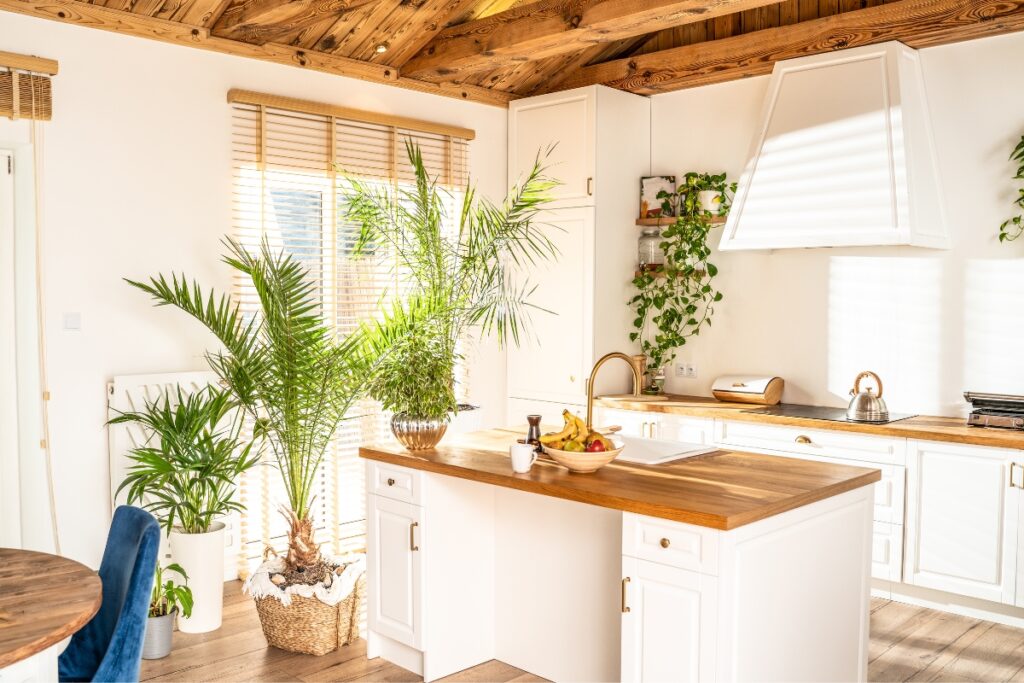
Inspired by the concept of biophilia, biophilic design brings nature indoors to create a sense of wellness and harmony in the kitchen. This design trend recognizes the innate human connection with nature and seeks to incorporate natural elements into the built environment.
One way to incorporate biophilic design in the kitchen is through the use of natural materials. Wood countertops or flooring add warmth and texture while creating a connection to the outdoors. Stone accents or live-edge shelving bring a touch of nature's beauty into the space.
Another aspect of biophilic design is maximizing natural light. Large windows or skylights not only flood the kitchen with sunlight but also provide views of nature outside. Natural light has been proven to improve mood, enhance productivity, and promote overall well-being.
Indoor plants are another key element of biophilic design. From small potted herbs on windowsills to hanging planters filled with trailing vines, plants bring life and freshness into the kitchen while improving air quality.
Incorporating biophilic design principles into kitchen spaces creates environments that are not only visually appealing but also promote well-being and harmony with nature.
Personalized Touches: Customization Trends in Culinary Spaces
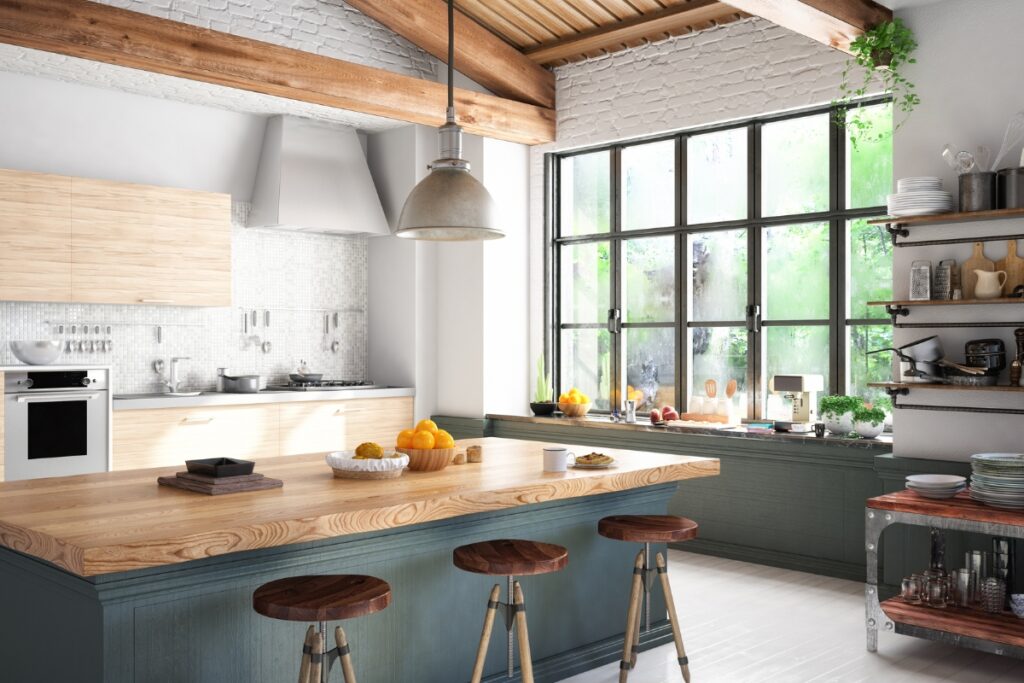
No two individuals are alike, so why should their kitchens be? Personalized touches have become a significant trend in culinary spaces as homeowners seek to create unique environments that reflect their tastes and lifestyles.
One way to personalize the kitchen is through custom cabinetry. From intricate carvings to unique hardware, custom cabinets allow homeowners to showcase their individuality and create storage solutions tailored to their specific needs.
Countertops also offer opportunities for customization. Whether it's a personalized mosaic design or a one-of-a-kind concrete countertop, homeowners can choose materials and finishes that align with their style preferences.
Another trend in customization is the incorporation of personal collections or artwork into the kitchen design. Open shelving can be used to display treasured dishware or cookbooks, while wall space can be adorned with paintings or photographs that hold sentimental value.
Personalized touches extend beyond aesthetics; they also encompass functionality. Homeowners can choose appliances that cater to their cooking habits, whether it's a built-in espresso machine for coffee enthusiasts or a steam oven for health-conscious individuals.
By embracing customization trends, homeowners can create kitchens that are not only functional but also deeply personal and reflective of their unique identities.
Multi-Functional Islands and Countertops: Versatility at Its Best
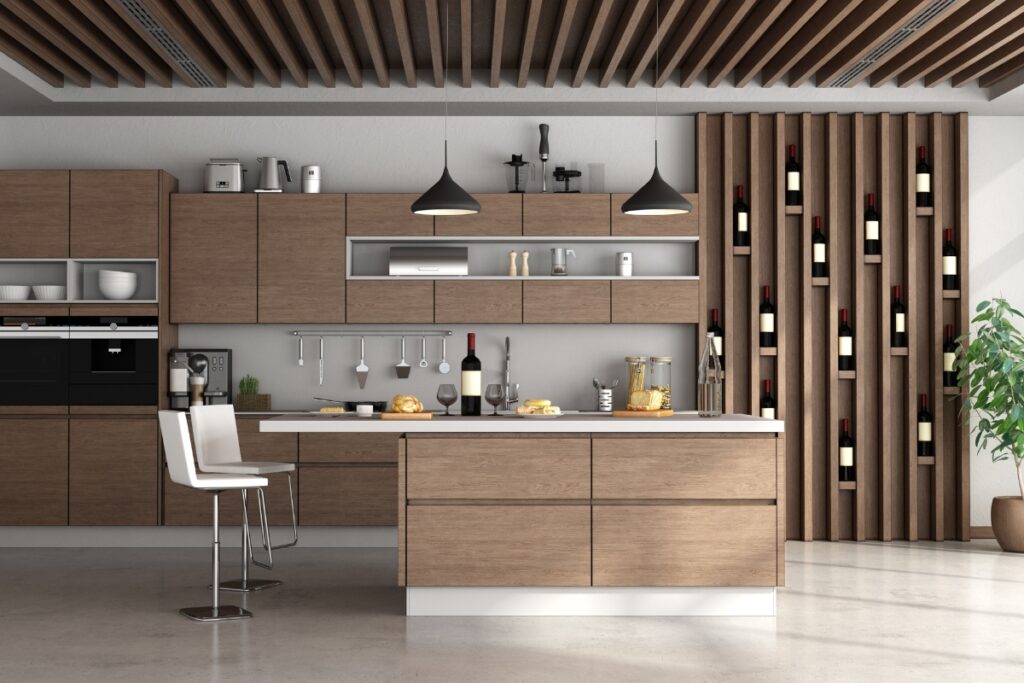
The kitchen island has evolved from being just an additional workspace to becoming the centerpiece of modern kitchen design. Multi-functional islands and countertops offer versatility at its best, transforming the way we cook, dine, and entertain.
An island with a built-in sink or stovetop creates an additional prep area while allowing hosts to interact with guests. It serves as a gathering spot during parties or casual meals and provides extra seating options when equipped with bar stools or chairs.
Furthermore, islands can be designed with storage solutions in mind. Drawers for pots and pans, shelves for cookbooks, or wine racks are just some of the possibilities when it comes to maximizing storage space within the island itself.
In addition to islands, countertops are also becoming more versatile. Countertops with built-in cutting boards or integrated sinks streamline meal preparation, while those with extended overhangs can double as dining areas or workstations.
By incorporating multi-functional islands and countertops into kitchen design, homeowners can create spaces that adapt to their ever-changing needs, making cooking and entertaining a breeze.
Conclusion: The Future of Kitchen Design - Where Form Meets Functionality
The future of kitchen design is an exciting blend of innovation, sustainability, and personalization. As technology continues to advance and our understanding of wellness deepens, culinary spaces will evolve to meet our changing needs.
Stay ahead of the curve with the latest kitchen design trends that are shaping tomorrow’s culinary spaces. Transform your kitchen into a modern, functional masterpiece with the expertise of Kitchen and Bath by Zeus. Contact us today at 404-602-2668 or fill out our online form for a consultation. Let us help you bring your dream kitchen to life, blending style and innovation for a space you'll love.



